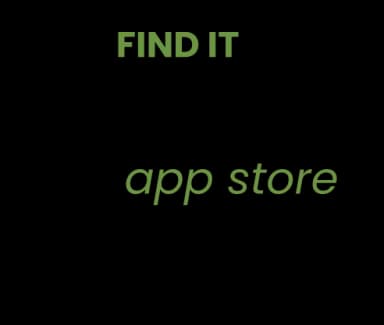Explore the dynamics of B2B, B2C, and C2C marketplace business models, including vertical & horizontal strategies, plus seven key insights and future trends.
Popular Marketplace Business Model

Manav Gupta
Author

Sharad Kabra
Editor
Manav Gupta
Author

Sharad Kabra
Editor

Read on:
TL;DR (too long; didn't read)
This blog targets entrepreneurs, startups, and businesses exploring marketplace business models, as well as industry researchers analyzing eCommerce trends.
- A marketplace business model connects buyers and sellers, acting as an intermediary.
- It includes B2B, B2C, and C2C/P2P models, catering to different transaction types.
- Revenue models range from commission, subscription, and freemium to ads and lead fees.
- Factors like product type, target market, scalability, and competition influence model choice.
- Trends like AI, hyperlocal focus, and blockchain shape marketplaces, with solutions like Shipturtle aiding development.
What is a Marketplace Business Model?
A marketplace business model is a type of eCommerce platform that facilitates the end-to-end transactions between a seller and a buyer. The marketplace acts as an intermediary in the process.
You can turn your single vendor ecommerce store into a larger marketplace with thousands of sellers and higher earning potentials. Try the Shipturtle marketplace solution to get started.
Different types of online marketplace business models
Typically, an online marketplace business model is classified into 3 types: that are business business (B2B), business-to-consumer (B2C), and consumer-to-consumer/peer-to-peer (C2C/P2P).
In the following sections, we will also be sharing other revenue-related marketplace business models for better reach and understanding.
Image: Common Marketplace Types
Business-to-Business (B2B) marketplace model
The B2B marketplace business model facilitates transactions involving business-to-business. There is no role for individuals. The marketplace model here acts as an intermediary between manufacturers, distributors, wholesalers, and suppliers as a whole.
B2B business models connect one business to another through a marketplace business model. A classic model marketplace example is Walmart.
Business to Consumer (B2C) marketplace model
The B2C online marketplace model facilitates transactions involving businesses and individuals. In this marketplace business model, businesses sell their goods and services directly to consumers through an e-commerce platform that acts as an intermediary.
The marketplace model in this case requires the business to offer an end-to-end shopping experience for consumers. The best B2C online marketplace example is the Amazon e-commerce platform, which is a widely successful model marketplace.
Consumer-to-Consumer or Peer to-Peer marketplace model (C2C/P2P)
The C2C/P2P marketplace model involves transactions between individuals to individuals. Consumers themselves act as sellers and buyers in this marketplace business model. Goods and services are initiated among peers or consumers as per their needs and requirements.
The best example is Uber cab services, where drivers accept consumers' rides based on consumer requirements. Riders and drivers use the C2C marketplace model technique in this effective marketplace model.
Creating an Online Marketplace? Consider These Fundamentals
Before diving in, consider these essential building blocks that define successful platforms.
Knowing Your Market:
This is the golden rule for any marketplace model. Identifying your niche (vertical marketplace) or offering a broad range of products (horizontal marketplace) is crucial.
- Vertical Focus: Here, you cater to a specific audience and their needs. Think Airbnb for accommodations or Upwork for freelance services.
- Horizontal Reach: These platforms offer a wide variety of products across different categories, like Amazon or Panjo.com.
Geographical Scope:
- Hyperlocal Focus: This emerging trend caters to a specific geographic area, connecting buyers and sellers within a smaller, defined location.
- Global Reach: Some marketplaces, like eBay or Walmart, operate internationally, allowing you to sell and buy products across continents.
Zomato (India), an online food delivery aggregator, recorded the highest revenue (61% CAGR 2021 to 2023) in the online marketplace industry, followed by Bukalapak (58% CAGR), an Indonesian e-commerce platform, and Uber (47% CAGR), a USA based cab service provider.
Marketplace models based on revenue generation:
- Commission Model
- Subscription/Membership Model
- Freemium Model
- Listing Fee Model
Marketplace models based on revenue generation:
- Featured Listings Ads Model
- Lead Fee Model
- Mixed Marketplace Model
Online marketplaces are evolving rapidly, with trends like hyperlocal focus, AI-powered personalization, social commerce integration, sustainability, blockchain technology, and AR/VR experiences shaping their future. These developments will make marketplaces more personalized, convenient, and sustainable.
Types of Revenue Model-Based Online Marketplace Models
Having understood the B2B, B2C, and C2C marketplace business models that operate under the fundamentals of vertical, horizontal, and global marketplaces. Let us now have a detailed look at the 7 marketplace business models based on revenue generation.
There are many marketplace software that offer these revenue models. Here are the types of marketplace revenue models to consider as per your profit generation needs and requirements.
Image: Popular Examples of Revenue-based Marketplace
1. Commission Model
This is one of the most common forms of revenue-based e-commerce marketplace business models. The marketplace model provider charges a commission for every transaction made. This is a typical commission revenue model for businesses and is widely used in B2C online marketplaces.
For example, if you order your food from Uber Eats, the platform charges a fixed rate or a certain percentage of the transaction amount. The restaurant will pay the commission amount from your entire order amount. This model marketplace can give high-income profits to businesses with huge sales in the B2C online marketplace space.
2. Subscription/Membership Model
This subscription/membership marketplace model is often used as a very common form of B2C online marketplace. In this, a subscription is required to access the goods & services offered by the marketplace business model. Both buyers and sellers may have to pay a certain amount to use the marketplace.
This marketplace model helps a gradual income growth and builds a trusted consumer community. A classic example is the Apple Music subscription or Spotify, OkCupid subscription plan. Once subscribed, you have access to the premium membership benefits commonly seen in model marketplaces.
3. Freemium Model
Another common marketplace business model is where basic services are offered for free and for added features and experience, the platform charges a premium service fee. The subscription model may seem similar to the freemium model, but both are different marketplace models.
One of the main features of this model marketplace is that consumers can try a product or service before paying for the premium services offered. This marketplace model helps gain a larger consumer base due to the free basic services on offer. Some of the brands that use this B2C online marketplace model are YouTube, Grammarly, Netflix, and so forth.
4. Listing Fee Model
This marketplace business model mainly requires a vendor, seller, etc., to pay a certain fee for every product listing. The model marketplace charges an amount every time a seller lists an item for sale on the platform. If you use classified ads, then the listing fee marketplace model will suit you the best.
Listing fee marketplace models can help businesses earn a quick buck, but huge listing fee requirements can slow growth rates. One of the best examples of this B2C online marketplace is Craigslist, which allows anyone to list anything they want online in return for a small fee or charge.
5. Featured Listings Ads Model
This is an online marketplace model where companies put up featured product listing ads across the website, apps, or landing pages. The marketplace business model offers targeted ad listings for a price tag. This marketplace model offers higher visibility and higher chances of sale conversion on the B2C online marketplace.
A good example of this marketplace business model is Etsy and Zillow. While Etsy offers commission-based marketplace business models, it also offers paid featured ad listings on its platform. Targeted listing ads can quickly help consumers find what they are looking for on a model marketplace.
6. Lead Fee Model
This marketplace model is generally used to gather contact information of consumers from other businesses. This model comes somewhere between the commission and listing models, where a consumer lead is accessed for a paid amount. This business model is good for gaining new customers and profiting from them.
It is a good option for companies to invest as per their consumer lead requirement and make a profit out of them by selling targeted products and services. For instance, HomeAdvisor is a good example of this model case. Another example is Thumbtack, which offers a B2C marketplace for skilled individuals and artists' requirements.
7. Mixed Marketplace Model
In simple terms, this mixed model uses every online marketplace technique to generate profits. Every model discussed above can be used as per the company's needs and demand. For every revenue-based strategy, this marketplace is used. This revenue generation has many funnels with reaching a larger consumer base and making higher sales.
Remember this model includes all B2B, B2C, C2C, commission, subscription, etc every revenue-based business model. A great example in this regard is Amazon Handmade and Amazon Pharmacy etc.
If you're a business owner or an entrepreneur looking to build your online marketplace, take the right step with ShipTurtle Marketplace Creator.
How to Select the Best Online Marketplace Business Model in 2024
Having given you a fair idea and dug into the marketplace business model landscape, it is time to learn the parameters to consider when selecting the right marketplace for your business model. There are quite a few of the important points to watch out for.
- Product Type
- Targeted Market/Consumers/Audiences
- Business Scalability & Growth
- Competitive Environment
- Overall Marketplace Operational Requirements
I. Product Type-
- The type and nature of products and services offered heavily influence a marketplace model.
- For instance, as discussed above, for selling specific items, an ecommerce platform similar to Esty will suit the best.
- For a wider variety of product selling, an Amazon-like marketplace can be adopted.
- These different product types influence inventory requirements and mostly work on the commission model of an online marketplace.
II. Targeted Market/Consumers/Audiences-
- Consumer/Audience buying behavior and demographics are the backbone of an online marketplace. Based on this consumer understanding, you should consider which model to use.
- For selling luxury items like Gold & Silver, a B2C marketplace based on a freemium model will work the best.
- For selling handmade and local items C2C marketplace will suit best, based on the revenue commission model. Targeted global audiences can work on a Mixed B2B model as well.
III. Business Scalability & Growth-
- Each type of online marketplace business model has its revenue growth potential. You should decide your marketplace according to your business expansion and growth plans.
- Few models offer exponential growth while few models offer steady growth, choose according to your business scalability roadmap.
- For business scalability, we suggest using the horizontal online marketplace business model for enhanced consumer reach and higher chances of a quick growth rate.
IV. Competitive Environment-
- No business can survive without having done good research on its competitors. No matter what business you own, knowing your competitors and bringing something fresh and appealing to the consumer can attract a lot of leads and growth opportunities.
- Based on this you can use the right online marketplace to succeed in the long run. Try to know which marketplace is doing well, and which marketplace is going down and apply it to your online marketplace business model.
V. Overall Marketplace Operational Requirements-
- Apart from the above points, a business or any entrepreneur should also have a broader look into how detailed an online marketplace works.
- You should also take into account the Transaction type, Revenue generation model, Inventory, supply & chain part, added services if offered and so much more.
- It doesn't matter if you have a service marketplace or a product marketplace, every transaction matters for each marketplace type.
- Do you want to build a constructive online marketplace business model? Try out the ShipTurtle online marketplace that offers end-to-end online solutions.
Challenges & Drawbacks of Online Marketplace Models
The online marketplace business model has become a significant tool for businesses to succeed in many ways. Not only will the businesses generate income but they also get customer data insights, target cross-border consumers, and so forth. However, every marketplace has its drawbacks and challenges like any other model.
Your Marketplace Launch,
Simplified
Get a strategy session that gives you a tailored roadmap, proven insights, and the push to launch fast.
- Finding Brands to List
Products listed on the marketplace business model cannot guarantee seller success. Lack of consumer insights can lead to poor purchase rates. Therefore, a deep understanding of listing techniques in a model marketplace and a willingness to adapt and change are crucial to succeed.
- High Overall Cost & Efforts
This includes a host of barriers like operational costs, advertising costs, and hefty platform fees. Every business or entrepreneur will have to add that extra effort and cost to launch a b2c online marketplace that is attractive and appealing to consumers. The success of a marketplace model depends on managing these costs efficiently.
- Building Trust
Trust cannot be built overnight among buyers and sellers in a marketplace business model. There is a consistent need for transparent policies, quality goods and services sold, safe payment methods, and secure consumer data to strengthen the b2c online marketplace experience.
- Higher Competition
Since many sellers and marketplace models are offering the same products or services, the competition here is very tight. This leads to product quality wars, pricing wars, and service qualities offered in the model marketplace environment.
- Strict Marketplace Platform Rules & Policies
Every marketplace business model has to lay down its own rules and regulations. Your vendors must follow these rules from time to time. Sudden changes to terms, conditions, and policies in a b2c online marketplace can drastically affect your business operation, sales, and profit. These rules and policies will also be subject to location and the region's prevailing conditions.
- Huge Dependence on Data and Technology
A marketplace model heavily relies on customer data and technologies to operate successfully. Any disruption in the technology and web data like hacking, data breaches, etc., can devalue a model marketplace and destroy customer loyalty towards businesses and marketplace business models.
100%
Go live on Shopify in less than 48 hours using our out-of-box multivendor functionalities. Our solution offers 400+ pre-built workflows, including vendor management, product listings, order processing, and payment management. The app is configurable, has no code & boasts 1000+ integrations!
The Future Ahead of Online Marketplace Business Model
Online marketplaces have revolutionized the way we shop and sell. As technology continues to advance, we can expect even more exciting developments in this space. Here are some trends shaping the future of online marketplaces:
1. Hyperlocal Focus
- Niche Markets: More marketplaces will cater to specific geographic areas or demographics, offering highly curated products and services.
- Community-Driven: These platforms can foster a strong sense of community, encouraging local businesses and consumers to support each other.
2. AI-Powered Personalization
- Tailored Recommendations: Artificial intelligence will enable marketplaces to offer personalized product suggestions based on individual preferences and browsing history.
- Virtual Try-Ons: Advanced AI technologies will allow customers to virtually try on clothes or visualize furniture in their homes.
3. Social Commerce Integration
- Seamless Shopping Experience: Marketplaces will be deeply integrated with social media platforms, allowing users to discover and purchase products directly within their social feeds.
- Influencer Partnerships: Influencers will play a more significant role in driving sales on marketplaces, collaborating with brands and curating personalized product selections.
Heard of Social Credit Cards yet? The currency is no longer cash but Instagram stories!
Read the full story here.
4. Sustainable and Ethical Marketplace
- Transparency: Consumers will demand greater transparency regarding product sourcing, ethical practices, and sustainability initiatives.
- Eco-Friendly Offerings: Marketplaces will focus on offering eco-friendly and sustainable products, catering to the growing demand for ethical consumption.
5. Blockchain Technology
- Trust and Security: Blockchain can enhance trust and security in online marketplaces by providing a transparent and immutable record of transactions.
- Smart Contracts: Automated contracts can streamline processes and reduce the need for intermediaries, leading to more efficient transactions.
6. Augmented and Virtual Reality Experiences
- Immersive Shopping: AR and VR technologies will offer immersive shopping experiences, allowing customers to virtually explore stores and products.
- Product Visualization: Customers can visualize products in their own spaces, making informed purchase decisions.
Get advanced shipping, configurable vendor management, payment features, and more. Install Shipturtle today from the Shopify App Store and enjoy a free trial to experience its benefits firsthand.

